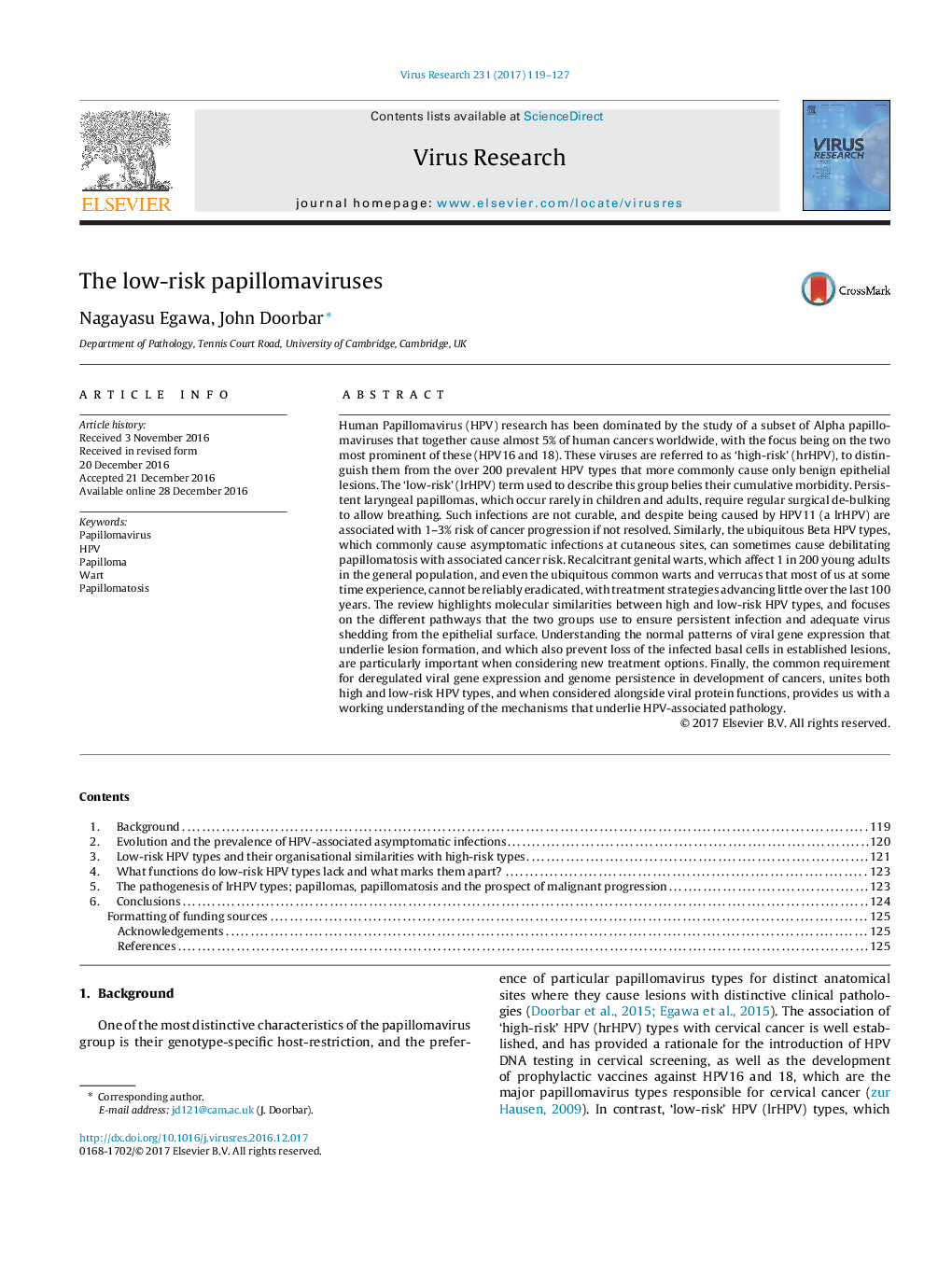| Article ID | Journal | Published Year | Pages | File Type |
|---|---|---|---|---|
| 5675593 | Virus Research | 2017 | 9 Pages |
â¢Low-risk HPVs include Alpha, Beta, Gamma and Mu types, and have distinctive disease associations.â¢They are associated with ubiquitous asymptomatic infections and benign self limiting papillomas.â¢In susceptible hosts they cause widespread papillomatosis, and are extremely difficult to treat.â¢Differences in protein function and patterns of viral gene expression underlie disease phenotype.â¢De-regulated HPV gene expression can lead to cancer progression with low and high-risk HPV types.
Human Papillomavirus (HPV) research has been dominated by the study of a subset of Alpha papillomaviruses that together cause almost 5% of human cancers worldwide, with the focus being on the two most prominent of these (HPV16 and 18). These viruses are referred to as 'high-risk' (hrHPV), to distinguish them from the over 200 prevalent HPV types that more commonly cause only benign epithelial lesions. The 'low-risk' (lrHPV) term used to describe this group belies their cumulative morbidity. Persistent laryngeal papillomas, which occur rarely in children and adults, require regular surgical de-bulking to allow breathing. Such infections are not curable, and despite being caused by HPV11 (a lrHPV) are associated with 1-3% risk of cancer progression if not resolved. Similarly, the ubiquitous Beta HPV types, which commonly cause asymptomatic infections at cutaneous sites, can sometimes cause debilitating papillomatosis with associated cancer risk. Recalcitrant genital warts, which affect 1 in 200 young adults in the general population, and even the ubiquitous common warts and verrucas that most of us at some time experience, cannot be reliably eradicated, with treatment strategies advancing little over the last 100 years. The review highlights molecular similarities between high and low-risk HPV types, and focuses on the different pathways that the two groups use to ensure persistent infection and adequate virus shedding from the epithelial surface. Understanding the normal patterns of viral gene expression that underlie lesion formation, and which also prevent loss of the infected basal cells in established lesions, are particularly important when considering new treatment options. Finally, the common requirement for deregulated viral gene expression and genome persistence in development of cancers, unites both high and low-risk HPV types, and when considered alongside viral protein functions, provides us with a working understanding of the mechanisms that underlie HPV-associated pathology.
